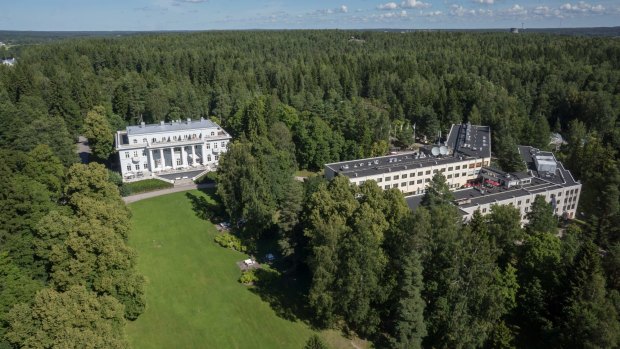This was published 7 years ago
Cryotherapy the cold, hard facts on the world's coolest spa trend
By Natasha Dragun
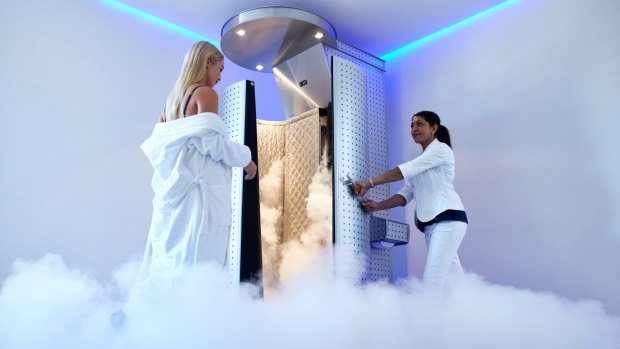
Cryotherapy – cryo comes from the Greek word for 'icy' or 'cold'. Credit: iStock
Having worked for a spa magazine in my formative years, I've become pretty au fait with obscure treatments over the years. I've been pummelled with sticks of bamboo in the name of tension relief; I've had salt thrown at me to cleanse my aura; I've had tiny carp nibble away at my dead skin. I've even had a facial that utilised bird droppings. But I had never been frozen – until I signed up for whole-body cryotherapy in Finland, that is.
The philosophy behind cryotherapy – or cooling therapy – is not, however, as obscure as its name suggests. For centuries, doctors and sports therapists have favoured the technique of "chilling" various parts of the body to reduce injury through the constriction of blood vessels. Think, applying an ice pack to reduce blood flow, alleviate pain, swelling and inflammation after a fall, bump or scrape, or taking an ice bath after serious athletic training. Doctors also use localised cryotherapy, such as applying small amounts of liquid nitrogen to destroy abnormal skin tissue.
Today's whole-body cryotherapy – cryo comes from the Greek word for "icy" or "cold" – takes things a step further, with willing participants who are not necessarily injured to begin with signing up (and then signing a lengthy non-liability form) to endure very, very sub-zero temperatures. Potentially for the health benefits; definitely for the bragging rights.
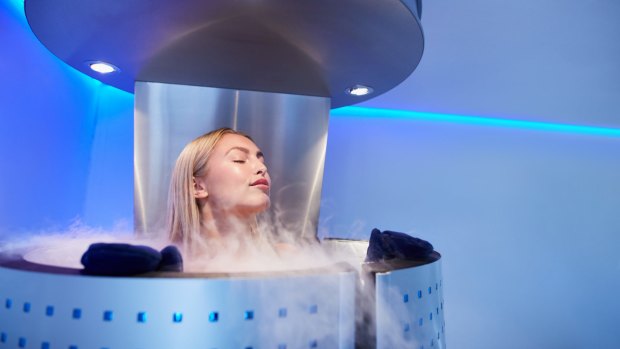
Cryotherapy may have health benefits, it definitely has bragging rights.Credit: iStock
My experience at Haikko Manor in Porvoo, a pretty spruce-laced spa town just outside the Finnish capital of Helsinki, begins with rules and instructions: I'm to shower, get completely dry, don my bikini, pull on felt booties and mittens, and step into an oversized vertical cylinder. Said cylinder is then chilled to -120Celsius – mine actually floats down to -138. A cool cloud forms as the cylinder's door opens; I shed my gown and step inside as liquid nitrogen (some chambers use refrigerated cold air) envelops me. The unit rises, and my head pops out the top of the cryo chamber – everything below my chin is treated to an icy blasting.
It's cold, really cold – colder than the coldest naturally occurring temperature recorded on Earth, in fact, which was -89.2C at the Soviet Vostok Station in Antarctica in 1983. Satellite recordings show there were absolutely, positively no people hanging around outside in their bikinis when that record was reached.
But it's not painful or unbearable. And, surprisingly, it's not the coldest I've ever felt – the next day, in local tradition, a dip in the Gulf of Finland after a sauna at Loyly proves a far more bone-chilling experience. In fact, I feel colder most days just walking the streets of Porvoo thanks to icy winds and a severely wanting winter wardrobe.
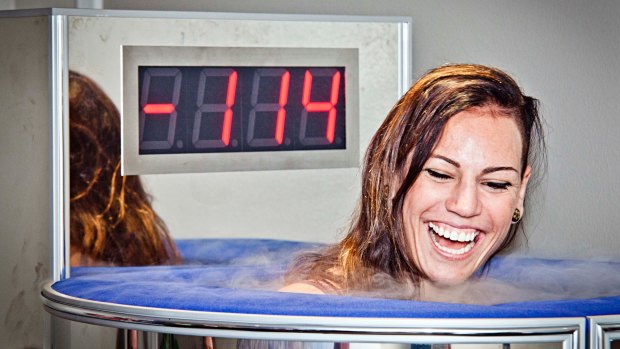
In the cryotherapy chamber at Haikko Manor. Everything below the chin is treated to an icy blasting.
The first minute is the worst. My teeth chatter uncontrollably, the skin on my legs burns, goosebumps pimple my entire body. But thankfully I'm distracted by a gaggle of onlookers snapping photos of me – well, of my head, appearing to "float" in a nitrogen cloud shrouding the top of the sci-fi-like cryo contraption. During minute two, my therapist (let's call him Sulev) tells me that we've hit – 120 in the chamber; my skin temperature, however, will only be brought down to about 5 to 12C. By the end of minute three, I'm feeling numb enough to I think I could stay in longer. But Sulev has stopped the clock as I've reached the maximum treatment time.
The three-minute limit might seem random, but Sulev tells me this is a global standard as it would take longer than this for my blood and internal organs to freeze. Frostbite, however, can set in quickly, which is why I'm supplied with bone-dry felt booties and gloves and am told to take particular care that my bathing clothes are also dry before stepping into the chamber.
Whole-body cryotherapy is said to have originated in Japan in the 1970s, with the idea conceived by rheumatologist Toshima Yamauchi. He suggested that standing in a freezing tank for several minutes could have wide-ranging health benefits – reducing pain and injury recovery at the top of the list, but others including improving sleep and boosting energy and mood. Some cryotherapists go even further, saying the chambers help slow ageing, treat asthma and skin conditions and even increase libido. A recent study by health researchers Cochrane Library concluded there was "insufficient evidence" to verify any of these claims, but that doesn't stop hundreds of people flocking to Porvoo – and thousands more signing up at centres around the world – to try the treatment.
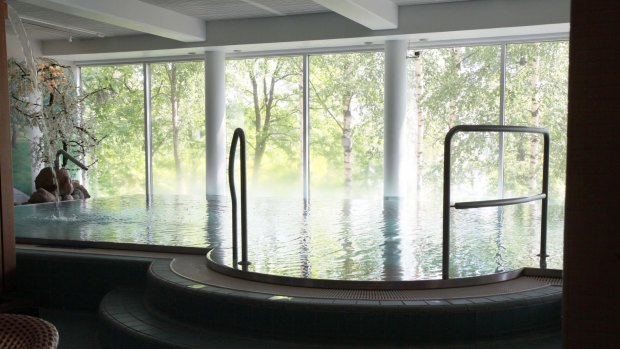
Cryotherapy is available at Haikko Manor.
There are a number of cryotherapy outlets around Australia, but none are quite as pretty as the spa at Haikko Manor. In addition to the chamber, the extensive complex includes wet and dry saunas and about 10 pools at different temperatures. Naturally, I gravitate to the steaming whirlpool after my icy encounter and am delighted to find that it's practically compulsory in Porvoo to sip an alcoholic beverage while taking the waters.
To be honest, I can't be sure that the three-minute boost in bloodflow to my internal organs did me any good at all. I did step out of the chamber smiling, but that could have been because I was about to sink into a whirlpool with a gin and tonic. I did sleep extremely well that night, but again, that probably had something to do with the tipple and a heavy meal of reindeer and potatoes. The spa's brochure does tell me that most people are in the same boat – you need to book in for six to 10 treatments to see any real results. Sadly, I'm not hanging around in Porvoo long enough for that to happen, but I'm cool with that.
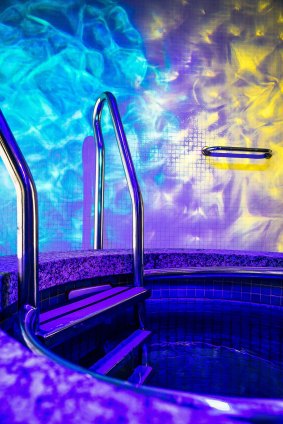
Whole-body cryotherapy is said to have originated in Japan.
FLY
Finnair operates daily flights in new A350 planes between Singapore and Helsinki, the Finnish capital. A number of carriers will get you from Australia to Singapore, including Qantas, Singapore Airlines and British Airlines. Porvoo is about 50 kilometres from Helsinki, and public buses run between the two cities. See finnair.comSTAY
In Porvoo, Haikko Manor has rooms across two separate buildings: the historic manor and newer spa building. While the latter are comfortable and just steps from the cryotherapy facilities, the former take things up a notch with spacious living areas, period furniture and sea or park views – some also come with balconies. See haikko.fi/en
Natasha Dragun was a guest of Finnair and Visit Finland.
Sign up for the Traveller Deals newsletter
Get exclusive travel deals delivered straight to your inbox. Sign up now.
